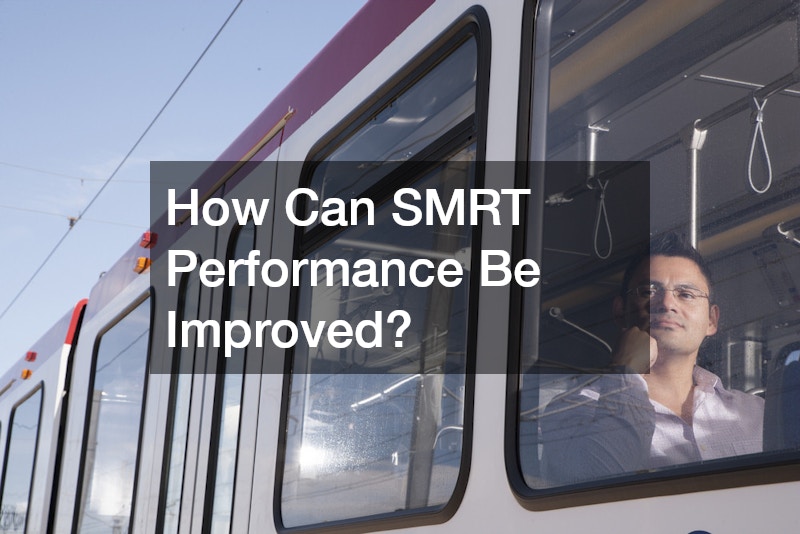SMRT plays a pivotal role in public transportation as it functions as a central hub for urban mobility. It ensures efficient movement across cities, which is essential for urban development and public convenience.
Understanding and measuring its success is crucial, as it directly impacts urban planning and sustainable city expansion. Successful SMRT operations contribute to improving the liveability of urban areas and the overall quality of life for its residents.
How is the Success of SMRT Measured?
Defining Key Performance Indicators (KPIs)
The success of SMRT is fundamentally measured through well-defined Key Performance Indicators (KPIs) that focus on efficiency, reliability, and customer satisfaction. These KPIs include metrics such as punctuality, frequency of service, and average commuting times, which directly relate to the daily experiences of commuters.
Beyond operational measures, customer satisfaction surveys help gauge how well SMRT meets commuter expectations. It enables a quantifiable assessment of whether SMRT is delivering on its service promises, essential for continuous improvement and adaptation.
Use of Customer Feedback and Satisfaction Surveys
Customer feedback is a pivotal element in assessing SMRT performance, providing insight into commuter needs and expectations. By regularly analyzing feedback from passengers, SMRT can identify trends and areas requiring strategic adjustments or enhancements.
Satisfaction surveys serve as a structured method to collect this feedback, offering a systematic approach to capturing customers’ experiences and perceptions. The data collected is vital for prioritizing initiatives that enhance service quality and user satisfaction.
What are the Main Benefits of SMRT to Public Transportation?
Economic Impact and Cost Efficiency
SMRT’s operations contribute significantly to economic savings and cost efficiency in urban transportation. By providing a reliable public transport option, it reduces the dependency on private vehicles, leading to decreased traffic congestion and its associated costs.
Moreover, SMRT supports local economies by increasing accessibility to businesses and employment centers. This accessibility helps drive economic growth, as it facilitates the easier movement of the workforce and customers alike.
Environmental and Social Advantages
SMRT contributes to reduced carbon emissions compared to individual car usage, aligning with environmental sustainability goals. Public transport systems like SMRT are crucial in the fight against climate change as they help lower the urban carbon footprint.
Socially, SMRT enhances community life by providing a reliable form of transport that connects various city districts. It fosters inclusivity by offering transport options to those who may not have access to private vehicles.
How Does SMRT Enhance Commuter Experience?
Technological Innovations and Services
SMRT continuously invests in technological innovations to bolster commuter satisfaction and convenience. Features such as real-time tracking and mobile ticketing systems enhance travel planning and convenience.
The integration of advanced technologies not only improves efficiency but also attracts a broader user base. It aligns with modern commuter expectations for seamless, tech-driven solutions in public transportation.
Safety and Accessibility Features
SMRT prioritizes safety and accessibility, incorporating numerous features to support all commuter groups. These include comprehensive safety protocols, CCTV surveillance, and clear signage to ensure a secure travel environment.
Accessibility improvements, such as ramps, elevators, and priority seating, ensure that public transport is inclusive. These measures help accommodate elderly and disabled passengers, broadening SMRT’s appeal and functionality.
What are the Challenges Faced by SMRT?
Operational and Technical Issues
Despite its success, SMRT faces various operational and technical challenges that can impact service quality. These issues include system breakdowns, maintenance requirements, and scheduling inefficiencies.
Addressing these challenges necessitates a proactive management approach and continuous investment in infrastructure. Such efforts ensure minimal disruption to services, maintaining high standards of operation.
Financial Constraints and Funding
Financial constraints often dictate the scope and scale of SMRT’s expansion and modernization plans. Securing adequate funding is crucial for sustaining operations, enhancing service delivery, and investing in future developments.
The financial aspect of managing public transportation systems like SMRT requires careful balancing of costs and revenue. Effective financial management is necessary to maintain affordability and accessibility for all commuters.
How Can SMRT Performance Be Improved?
Innovative Solutions and Future Trends
Advancing SMRT performance involves embracing innovative solutions and staying ahead of emerging trends. Technologies such as autonomous vehicles and AI-driven analytics offer future potential for transforming public transportation.
Understanding these trends and integrating them into service models is essential for maintaining SMRT’s competitive edge. Future-focused planning ensures SMRT continues to meet the evolving needs of urban populations.
Policy and Management Strategies
Strategic policy interventions and effective management strategies can significantly boost SMRT’s success. Policies that prioritize sustainable transport investment and development can enhance service delivery and infrastructure quality.
Also, cultivating a responsive and adaptive management culture is vital for addressing changing commuter expectations. Adopting strategic practices enables SMRT to align operations with the best possible outcomes for users and stakeholders.


